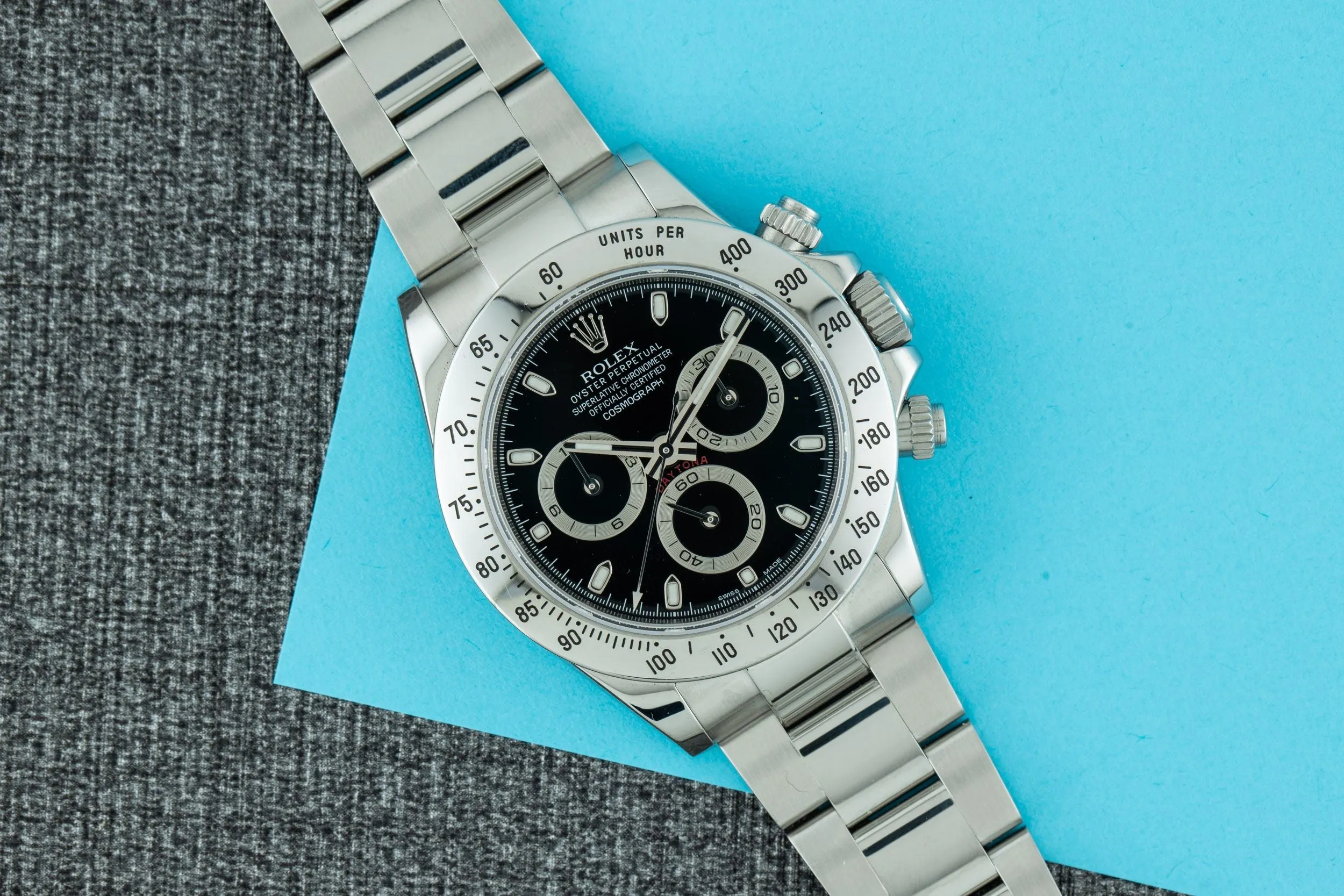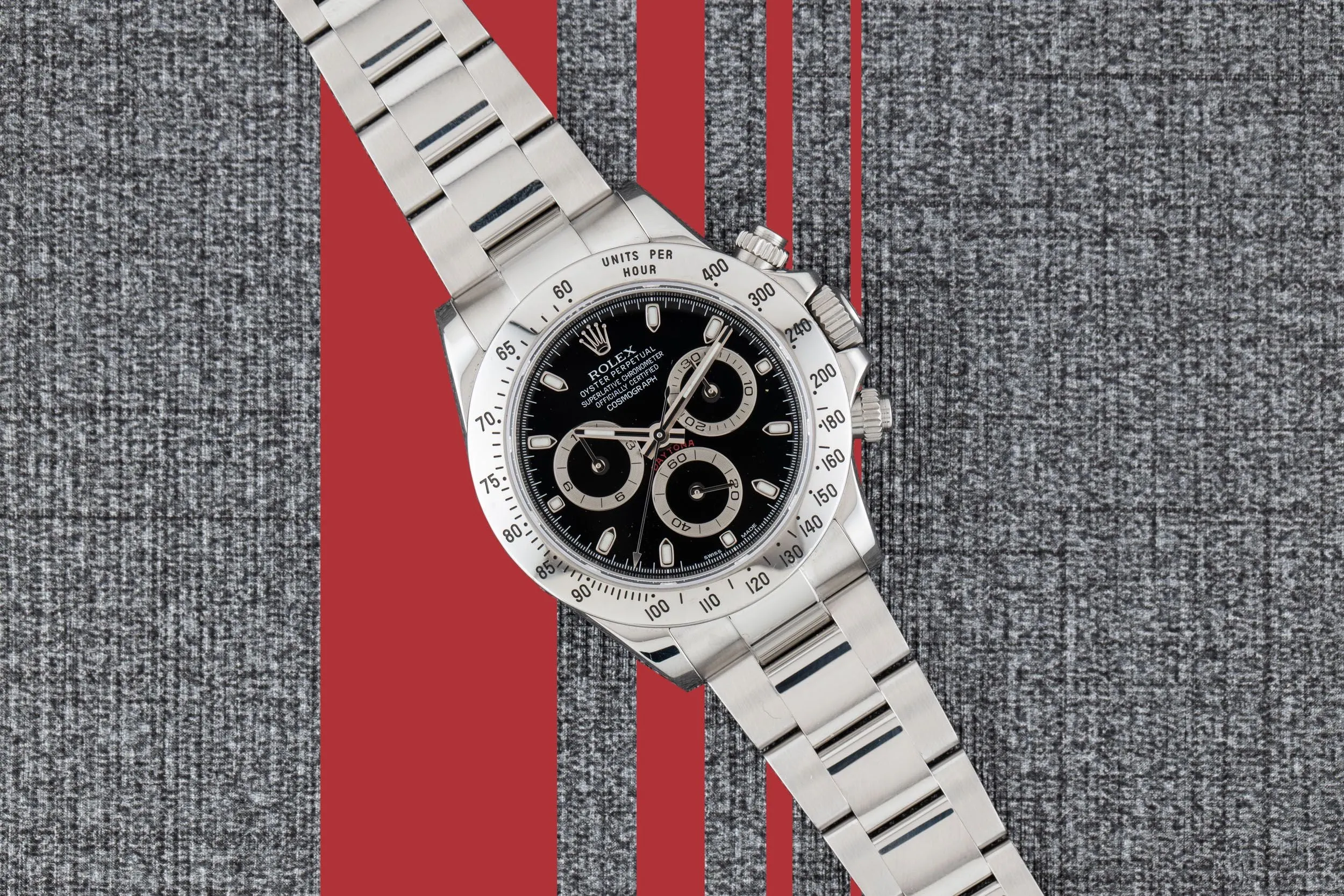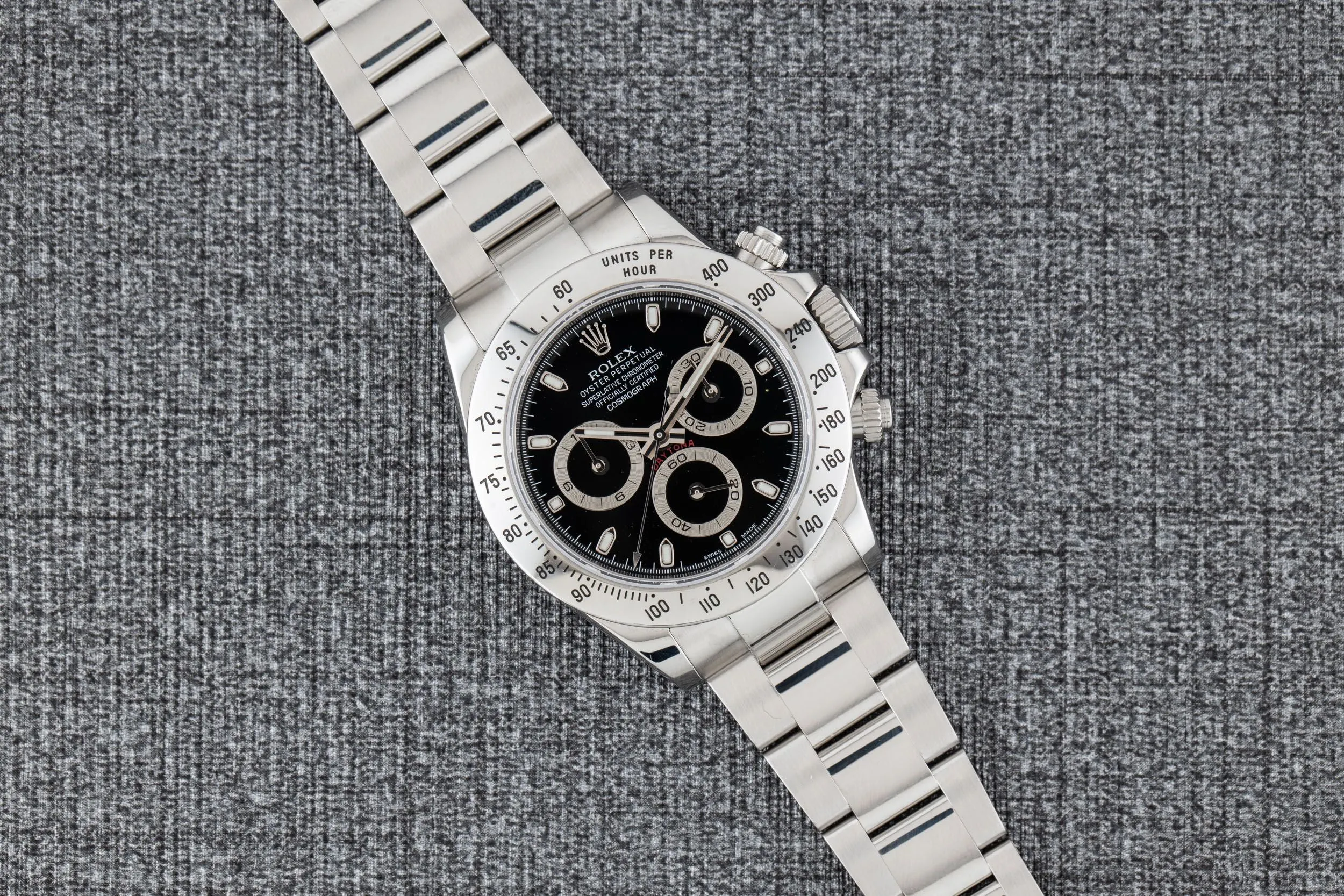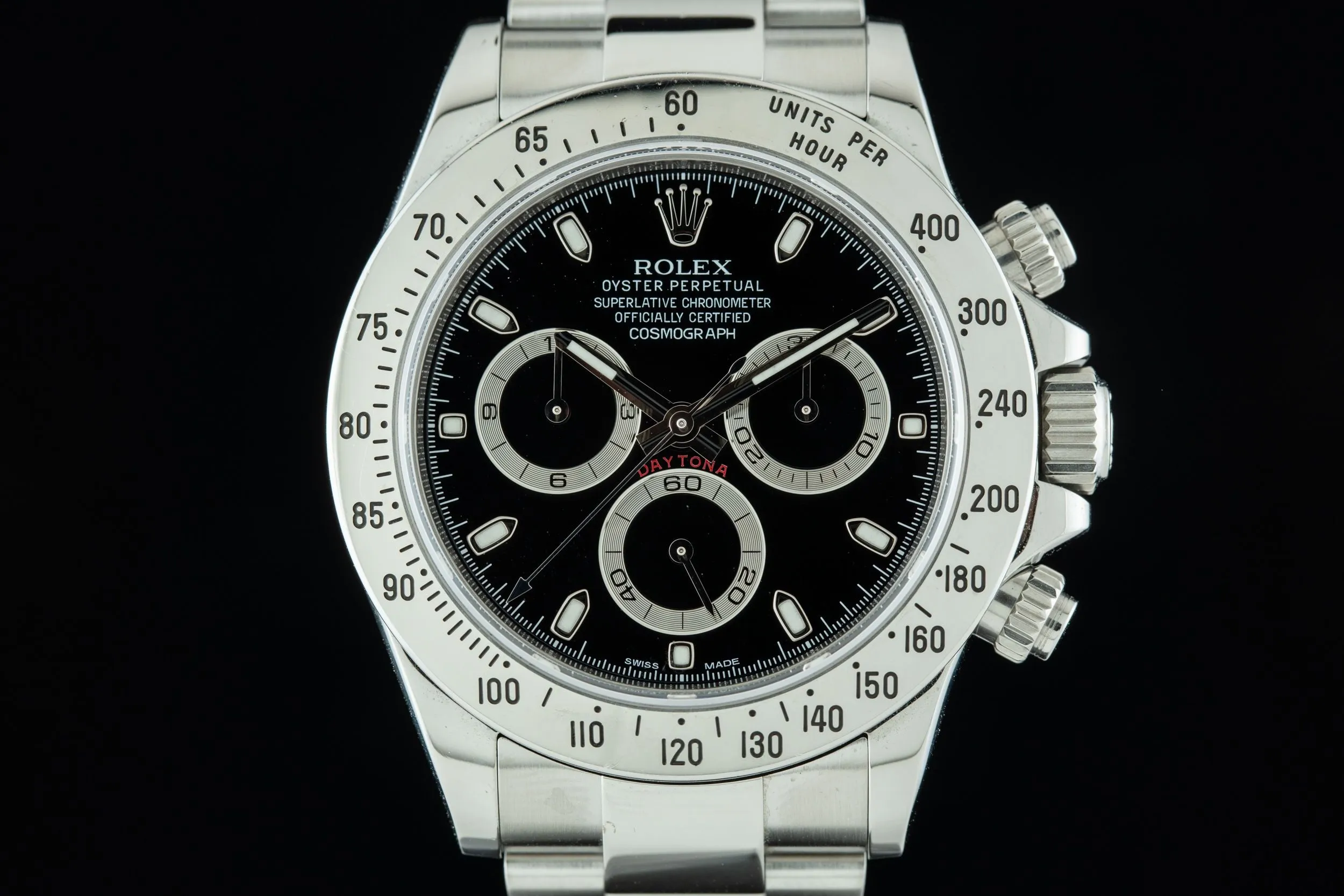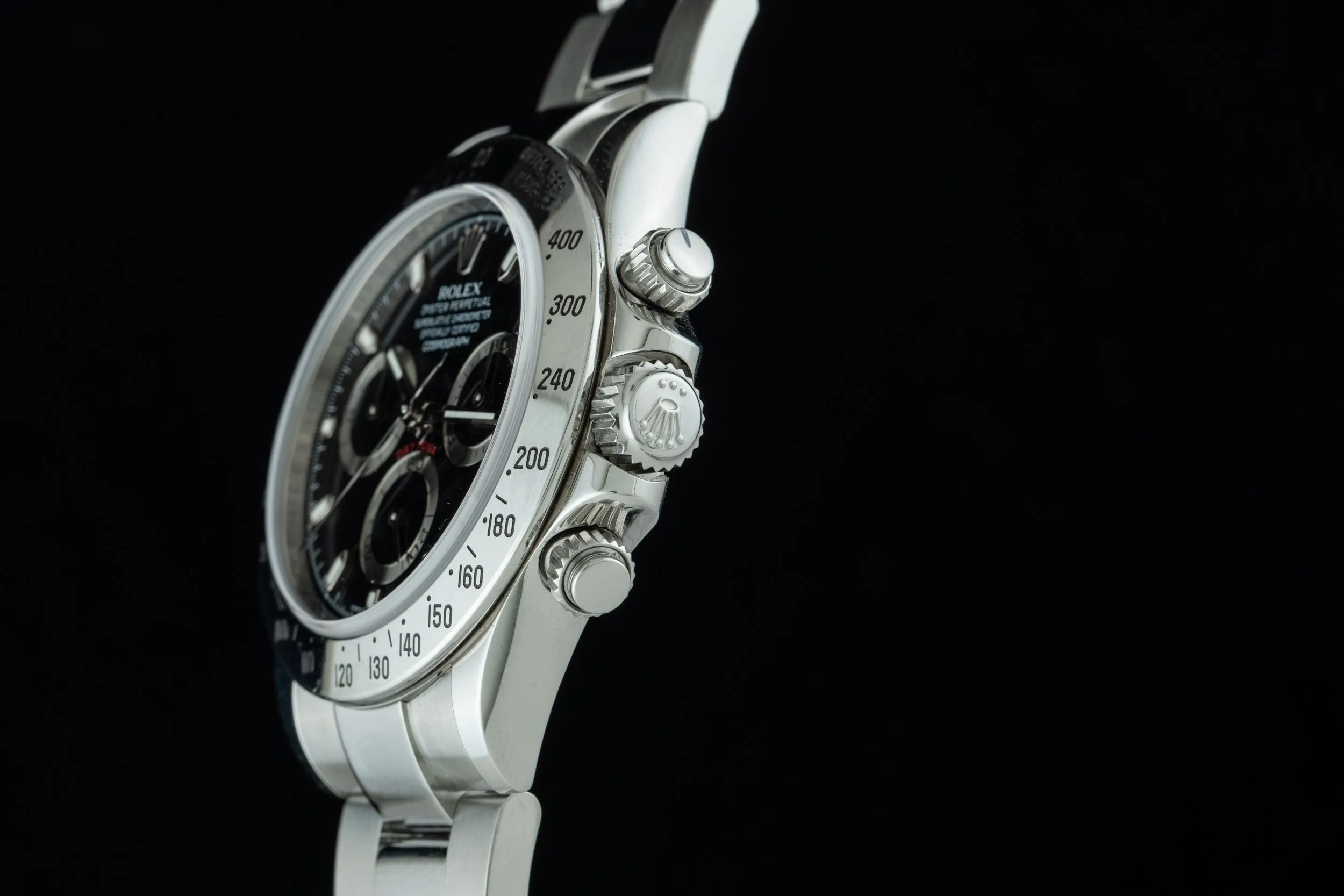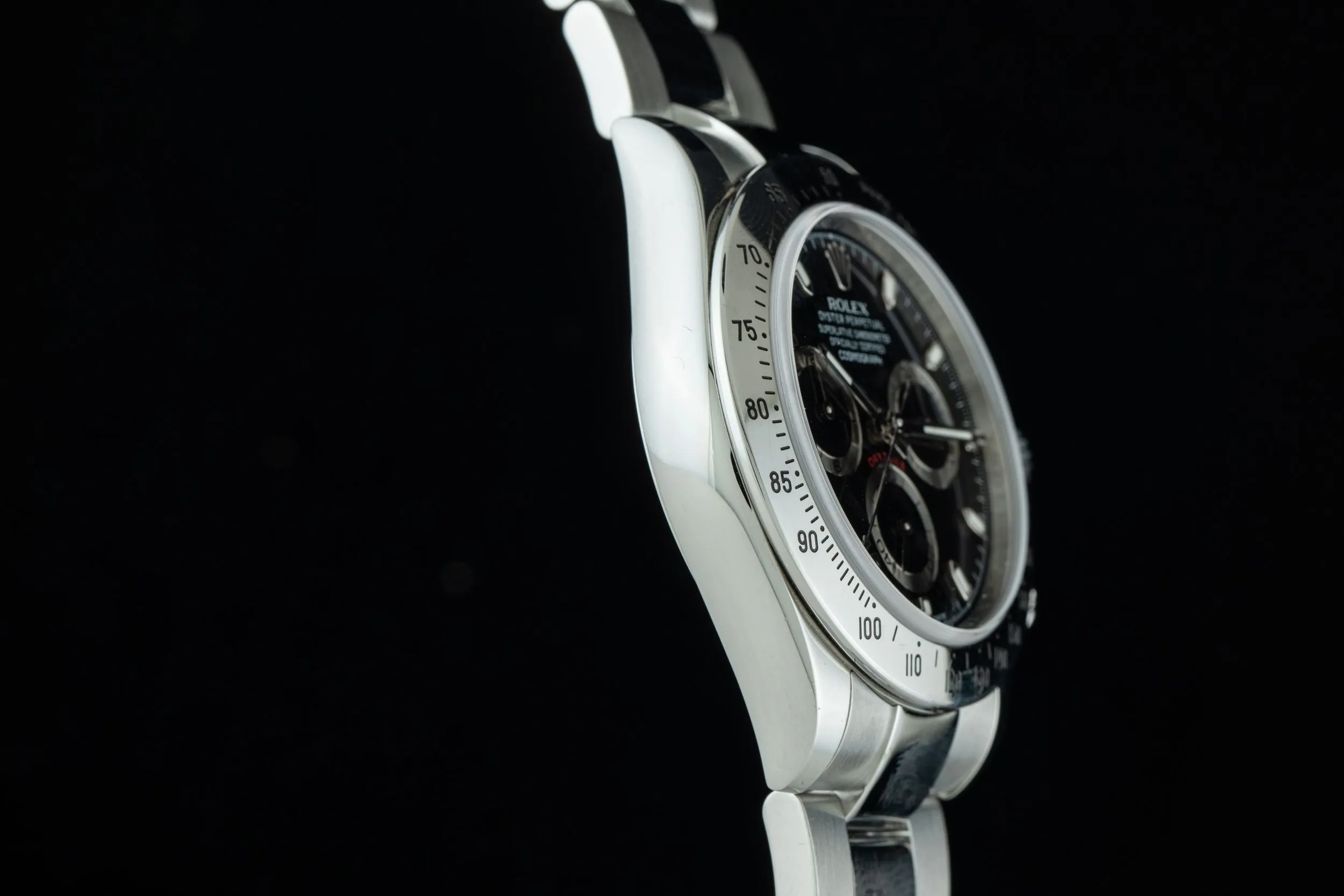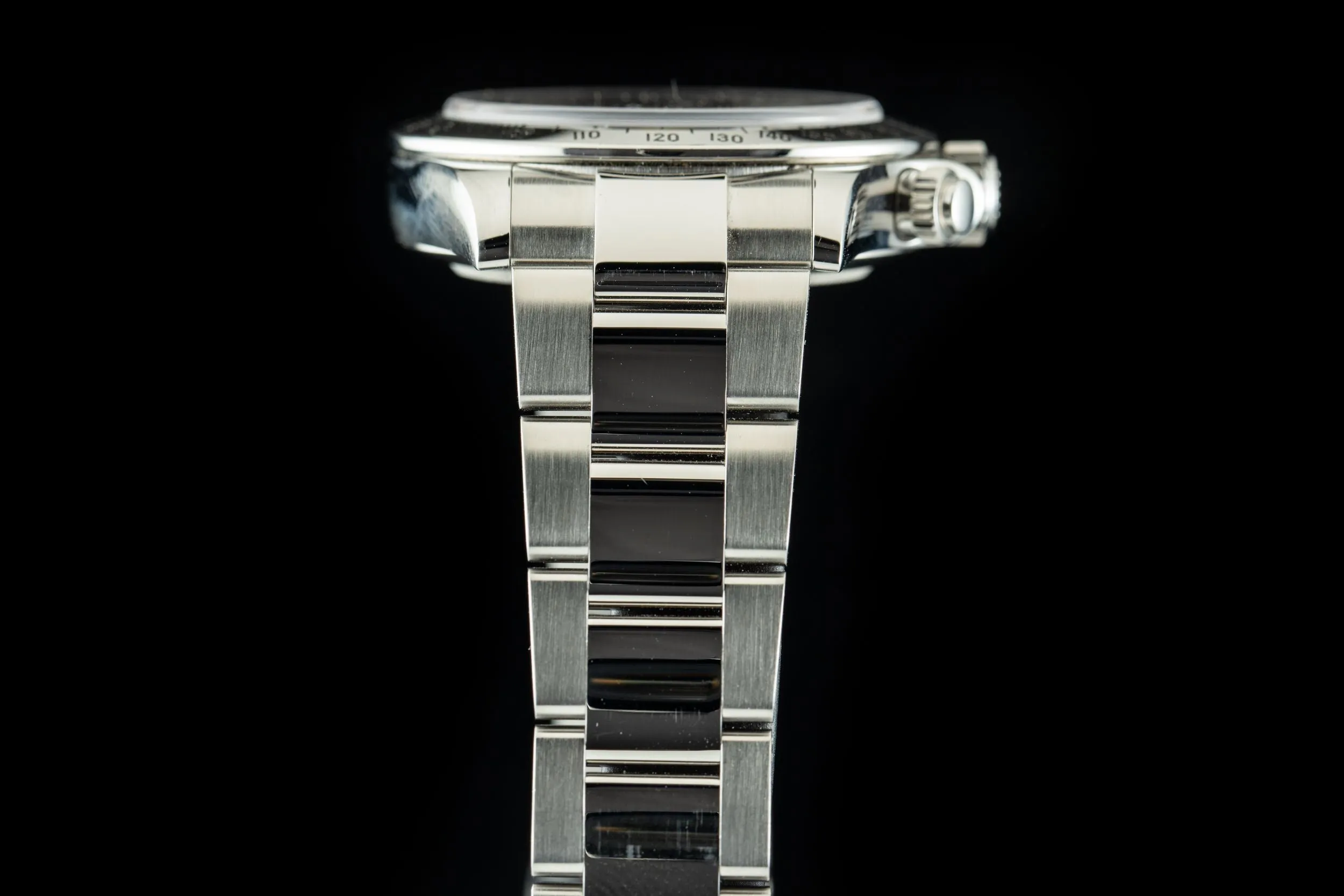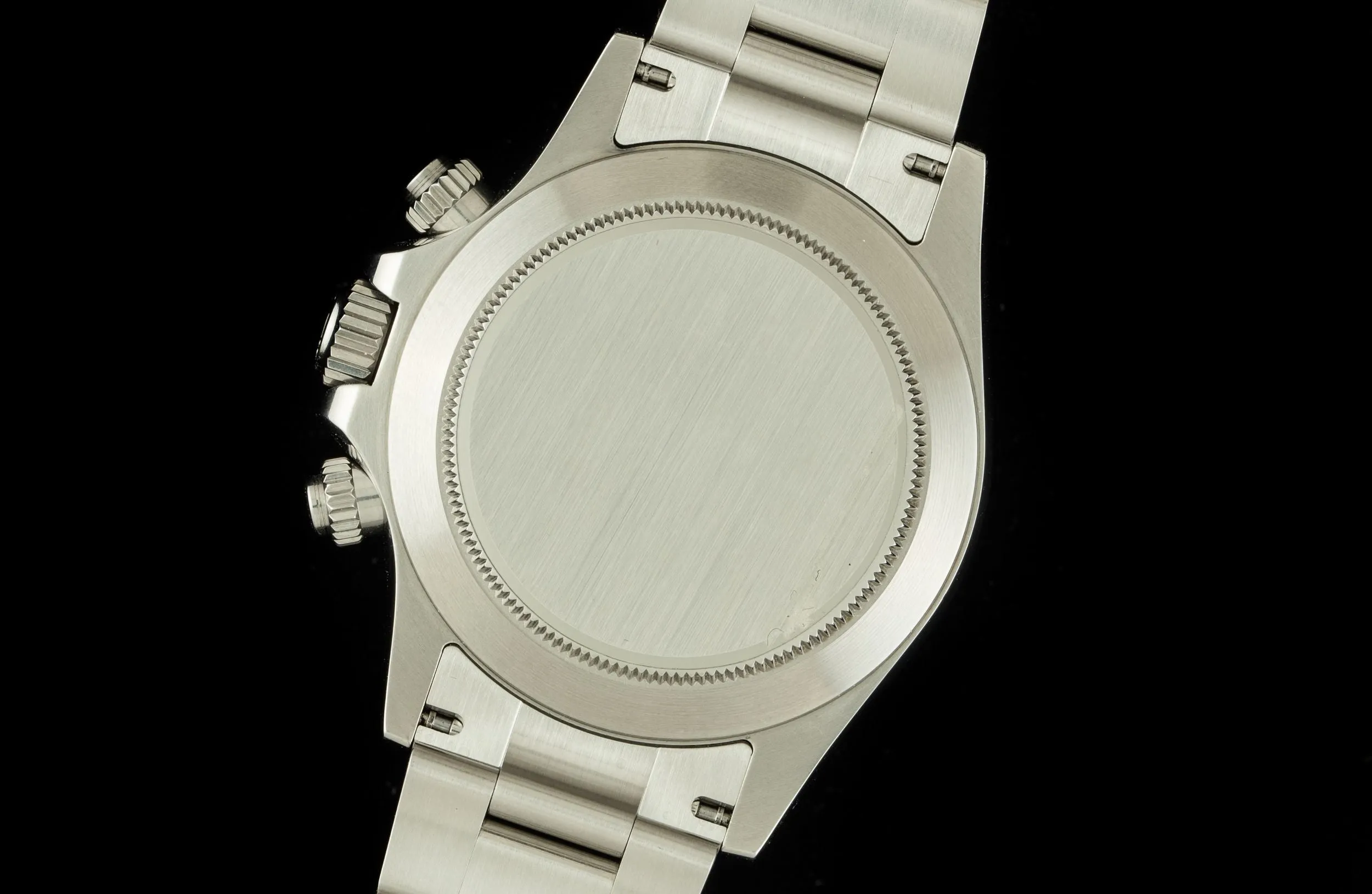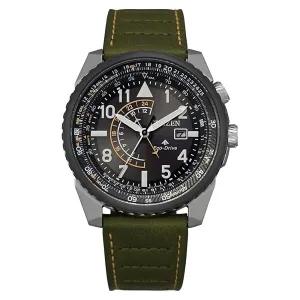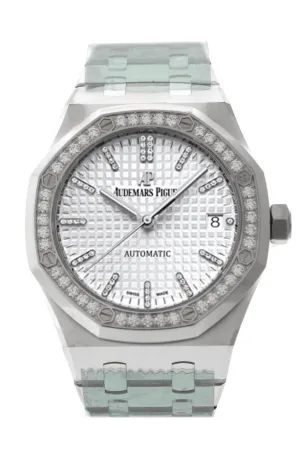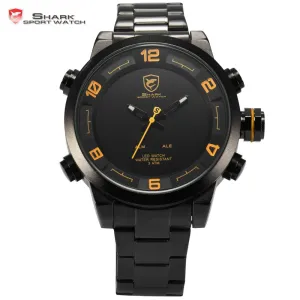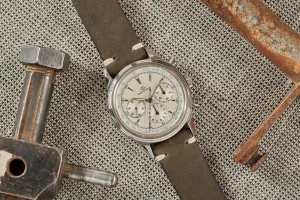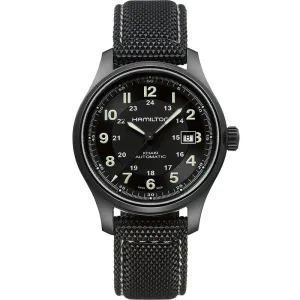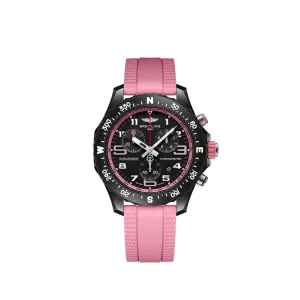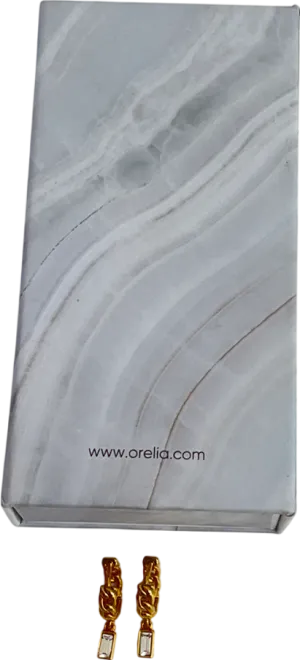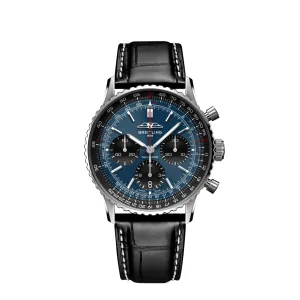Why We Love It
Interestingly, all the most desirable vintage Rolex Daytonas used movements sourced from other suppliers - the Reference 116520 not only marked the first in-house automatic chronograph movement for the Daytona, but the first in-house chronograph movement ever produced by Rolex! Visually, the base model 116520 is virtually identical to its predecessor, the so-called “Zenith Daytona” models from the 1990s. This extended the life-cycle of the style, which later evolved to the current ceramic “C-Daytona” models currently offered.
From a design standpoint, the 116520 is a contemporary classic and represents an important chapter in the development of the modern Rolex timepiece - that is to say superlative in every metric!
This particular example, while superb in condition to begin with, is differentiated even further still by a small yet significant detail on the dial. Nicknamed the 'APH' dial for a small spacing error in the word 'Cosmogr aph', and only appearing in a small serial range, these have become highly sought after by the Rolex collector community.
If its one thing that gets Rolex collectors excited - it's tiny font variations and printing mix ups!
The Daytona Story
The Rolex Daytona. King of the chronographs!
Rolex first started experimenting making chronographs in the 1930s – first known as Cosmographs – which set the mold for what would ultimately evolve into the single best-known chronograph in the world. These early watches, like many chronographs of the period, had monochromatic dials and a tachymeter ring printed on the outer edge of the dial.
The design of the Cosmograph gradually changed its dial configuration (a shift from monochrome to the "panda" color schemes now closely associated with the model), and a relocation of the tachymetric scale to the bezel, which made it a clear sportsman's watch. In 1964 Rolex added the name Daytona to the model (taken from the 24 Hours of Daytona Race which Rolex started sponsoring in 1962), and its motorsports association was cemented.
The earliest Daytonas relied on that well known manually-wound workhorse movement - the Valjoux 72. But in 1988 Rolex released a Daytona using Zenith's El Primero movement, making the Cosmograph Daytona now worthy of the appellation "Oyster Perpetual." These "Zenith" Daytonas have gained serious traction over the past decade on the vintage chronograph market, with potential to appreciate in value to lofty heights.
Still, Rolex has never been the sort of brand to rely on off the shelf parts for long, so when the Reference 116520 debuted in 2000 at Basel World, it made headlines. This led to the eventual introduction of the current production model, Reference 116500LN, fitted with a black ceramic bezel that is arguably the most in-demand sports watch on the planet.
Whether your taste runs to Pre-Daytona Cosmographs, hand-cranking Valjoux 72 powered models from the 1960s-1980s, or an Automatic Zenith or In-House model, a Rolex Daytona is quite simply a world-class chronograph with a righteous amount of pomp and circumstance justifiably included.

